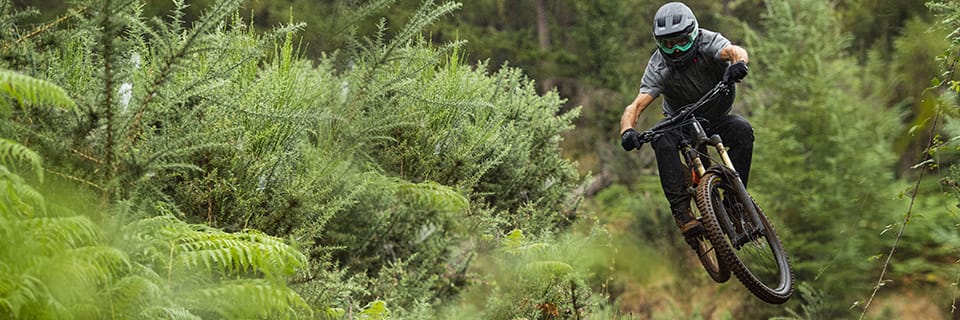Are you still using double or triple chainrings and your transmission is playing tricks on you? Do you find the front derailleur difficult to adjust?
Then maybe it's time to simplify and upgrade your mountain bike!
In recent years, the single-platform system has become an essential part of mountain biking. Some brands offer additional sprockets for 9-, 10- or 11-speed cassettes, while keeping a single chainring on the crankset, but sometimes this type of assembly leads to incompatibility problems. Over time, it has become necessary to standardize these products.
With the arrival of 12-speedmajor manufacturers such as Sram and Shimano have developed specific groupsets with multiple technologies. So why should you switch to 12-speed? What are the standards and market players? How do you check compatibility with your bike? We'll explain everything in this guide to help you choose your new 12-speed groupset.
The advantages of 12-speed drivetrains?
The main question on everyone's mind is "how do you get two or three chainrings onto one? Are we going to lose gearing?"
The answer is "no, you won't, because it's all down to the cassette, which is increasingly equipped with technology and innovations"!
As you can see, opting for a single chainring and keeping your current cassette won't give you the same ratios.
The cassette plays an essential role by offering a greater number of gears, a more appropriate gear spacing, a large sprocket that can go up to 52 teeth and a small sprocket with up to 9 teeth. A far cry from the 11-32, 11-34 cassettes with 9 or 10 speeds.
With the 12-speed, gear coverage has been extended. By way of comparison, a 24/38-tooth double-plate assembly with an 11/36-tooth 10-speed cassette is equivalent to a 12-speed single-plate assembly with a 10/52-tooth cassette, with 520% gear range coverage.
Obviously, in reinventing the cassette, the rear derailleur has also been totally redesigned, as have the chain, shifter, crankset and chainring.
As a result, the benefits are manifold :
- No more front derailleurno more fiddly cable adjustments!
- The front shifter is removed and the crankset has a single chainring, saving weight!
- The simplicity and comfort of useYou'll feel less lost when choosing a gear.
- The responsiveness and precision and precision.
- The question of whether or not to cross the chain is no longer an issue.
- Overall design: fewer cables, sheaths, derailleurs... the bike is more streamlined.
So we all agree, the 12-speed is quite a revolution! Simpler, more precise, less restrictive, you're more efficient and can ride with greater peace of mind. Let's get into the details and take a closer look at what the manufacturers have to offer!
Market players
The two transmission giants are of course present on the market. But the first brand to launch innovations is Sram.
Indeed, 2016 marks the debut of a new generation of 12-speed drivetrains with the arrival of Eagle technology from Sram in the high-end segment. It offers, for the first time, a development range of 500% equivalent to a double chainring assembly and an 11-36-tooth cassette. Single chainrings already existed before, but we were still a long way from this development range, which enables us to cover a wide variety of terrains and climbs.
The brand has thus designed specific components such as 10-50-tooth or 10-52-tooth cassettes, an XD-standard freewheel body for the wheel hub, a derailleur that can cover this wide range of ratios, an adapted shifter, a thinner chain and a single-plate crankset.
The Eagle range is now very broad, from entry-level groupsets to the very top of the range. It is available on 5 mechanical versions: SX (entry-level), NX, GX, X01, XX1 and 3 electronic versions: GX AXS, X01 AXS and XX1 AXS.
Shimano came later to this market in 2018 by introducing the 12-speed on its top-level group, XTR.
The brand thus offers an ideal combination for competitors in Cross-Country or Enduro and record weights for the high-end category with an ultra-light cassette at 370 g in 10-51 teeth, a benchmark! Over the years, the range has expanded, and as is often the case with Shimano, the brand has taken the technologies of its XTR spearhead and applied them to lower-end models. The XT drivetrain arrives in 2019, followed by SLX and Deore drivetrains in 2020.
We find the same evolutions as Sram, with dedicated components for the 12-speed and, in particular, a specific freewheel body. Microspline freewheel body for the wheel hub.
Other market players include TRP brand, which offers a TR12 kit including shifter and derailleur. The brand Sunrace develops a wide range of products, including derailleurs, shifters, chains and, above all, Shimano and Sram-compatible cassettes.
We can also mention the manufacturer E-Thirteen with its 12-speed 9-50-tooth cassette, covering a development range of up to 556% - a first! And last but not least, the MSC, Microshift, KCNC and Garbaruk brands offer a wide choice of cassettes.
And what about the chainring?
A question we're often asked is: "What gearing do you use for the faceplate?"
The answer is "it will depend on your practice and your level".
Basically, the larger the cog, the harder the gear will be to drive, ideal for trained racers. Conversely, a smaller gearing will be easier to handle, ideal for more technical terrain, for example.
For the competitors XC, the 34-tooth is well suited, and for enduro racing, the 32- or 34-tooth, depending on the terrain.
For sportsmen in XC, Trail, All-Mountain or Enduro use, this can range from 26 to 32 teeth, or 26 or 28 teeth if you're riding in the mountains with very steep climbs. The 30-tooth chainring is the right compromise for all levels and for hilly and mountainous terrain. The 32-tooth chainring for regular, well-trained sportsmen and women (2 to 3 outings a week).
Mechanical or electric?
You're convinced that a 12-speed transmission is right for you, but there's still one question unanswered: which should you choose, mechanical or electric?
Innovation is an ongoing process, as bikes, practices and riders evolve too. With the advent of the VTTAE, brands are going all out for electronics. Electric drivetrains have been around for a long time! Perhaps you didn't know it, but it was Mavic who first innovated on this subject in 1994 with its wired Zap Mavic System, and in 1999 with its wireless Mektronic system for racing bikes!
Shimano's first electric drivetrain was launched in 2009. The technology is called Di2 and is based on an electric cable connecting the components. This innovation can be found on various levels of the road range, as well as on the XT and XTR ranges in 11 speeds for mountain bikes. The 12-speed Di2 and wireless MTB have yet to see the light of day for the Japanese brand, but are eagerly awaited!
In 2019, the first wireless electric groupset arrives in mountain biking, and we owe it all to Sram! After Eagle technology, it's time for Eagle technology AXS technology for X01 and XX1 groupsets! Years of research and testing have resulted in a unique concentrate of technologies to put an end to cables! Who hasn't struggled with a derailleur adjustment, or a cable that cuts or seizes?
With AXS electronic cordless technology, you can do away with all these inconveniences, even if you have to contend with others such as a battery to recharge and a high acquisition cost. And the brand isn't stopping there: since the beginning of 2021, AXS transmission has been available on the GX range at a more affordable price.
There's also a dedicated mobile app for multiple customizations to adjust settings to your needs. Of course, the final advantage is a very streamlined bike with no cables or sheaths - a classy touch on a high-end mountain bike!
To sum up, if you don't mind maintenance, your budget is limited and connectivity isn't your cup of tea, stick with the 12-speed mechanical transmission! On the other hand, if you don't like "getting your hands dirty", love being at the cutting edge of technology, and have the means to invest, the question doesn't even arise!
All right, you're on the starting blocks, but what about compatibility with your bike? Come on, one last bit of reading, and here we are:
Compatibility
It's a tricky subject, but it's essential to check your bike's standards before buying a 12-speed drivetrain.
For a Sram Eagle 12-speed mechanical or electronic transmission :
The first thing to check is your freewheel bodyThis is what turns your cassette on your wheel hub!
Your hub must be fitted with a freewheel body. Sram XD. First of all, make sure that the freewheel body can be disassembled and that your wheel manufacturer offers this Sram XD freewheel body as a spare part. Otherwise, you'll have to change the hub or the whole wheel!
A little tip: if you don't want to change the body, there's a Sram cassette, the PG-1210, which is compatible with classic Shimano 9/10-speed freewheel bodies, but beware: it's much heavier than the XD body versions.
As for the crankset, be sure to check the bottom bracket standard Threaded, Press-Fit, BB30...
If your mountain bike is equipped with the standard Boost rear axle (12x148 mm rear), be sure to choose a Boost crankset, as the chain line is different from the standard 12x142 mm or 9x135 mm axles.
For your convenience, 12-speed groupsets come complete with everything you need: derailleur, cassette, chain, crankset, bottom bracket and shifter!
For a Shimano 12-speed drivetrain :
Shimano 12-speed cassettes can only be fitted to Shimano MicroSpline freewheel bodies. It is therefore essential to check that your hub can be disassembled and that the part is available from your wheel manufacturer, as this is a very recent standard. More and more brands are offering this type of body: Shimano, DT Swiss, Hope, Mavic, FSA, Spank, Fulcrum... the choice is getting wider, but check compatibility before you buy.
Another important point is to check that your bottom bracket and crankset are compatible. Like Sram, if your bike is Boost standard, be sure to take a crankset Boost.
You'll find this Shimano 12-speed transmission on many of today's mountain bikes and VTTAEs. A sign of trust between bike manufacturers and the Japanese brand.
To conclude on compatibility:
Keep in mind that it's better to make a global change than to change parts on a case-by-case basis, due to the different state of wear of each transmission component. Brands offer complete groupsets or mini-groups (derailleur, chain, cassette and shifter). These mini-groups are great economical alternatives to complete groupsets, although you should check that your chainring is compatible with a 12-speed chain. Last but not least, Sram and Shimano components are not compatible with each other for 12-speed.
FAMILY - MTB Drivetrain
-
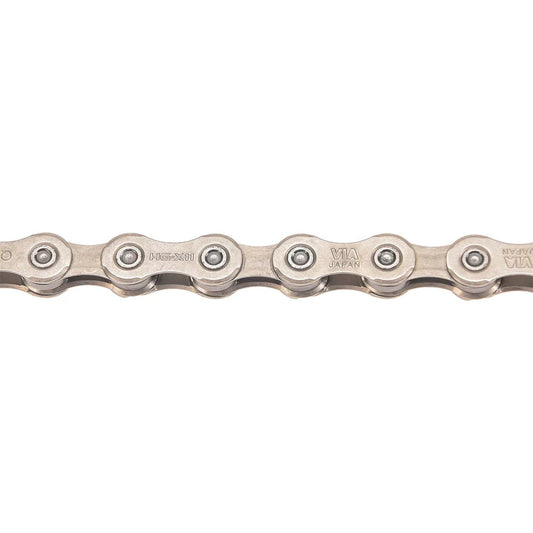
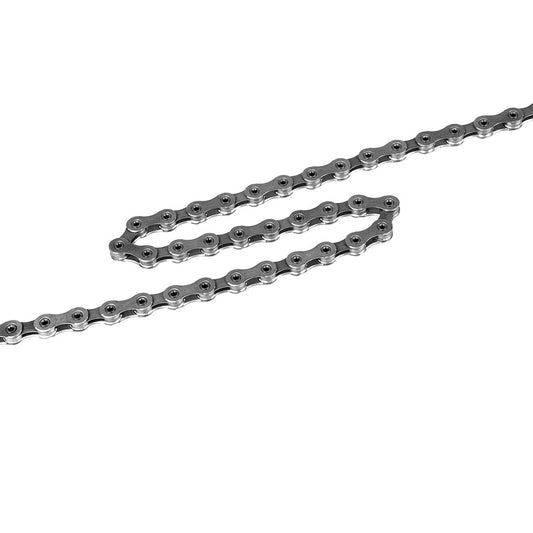
11 Speed SHIMANO XT ULTEGRA CN-HG701-11 Quick Link E-Bike Rated chain
Regular price From 28,99 €Regular priceUnit price per -
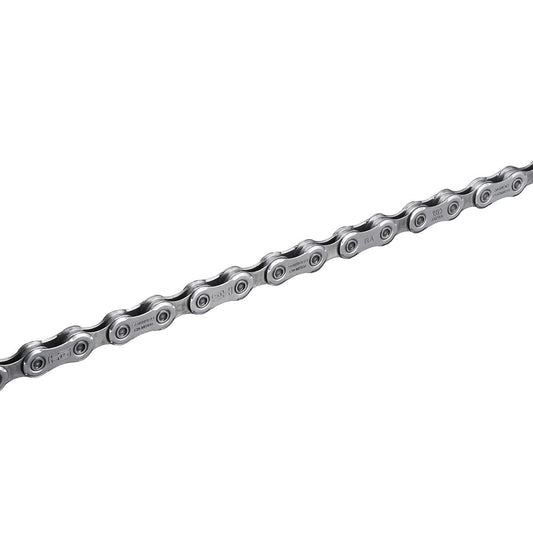
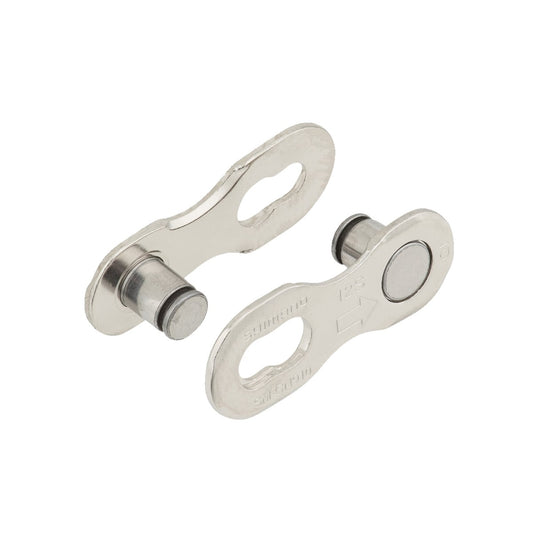
12 Speed SHIMANO XT ULTEGRA CN-M8100 Quick Link E-Bike Rated chain
Regular price From 29,99 €Regular priceUnit price per -
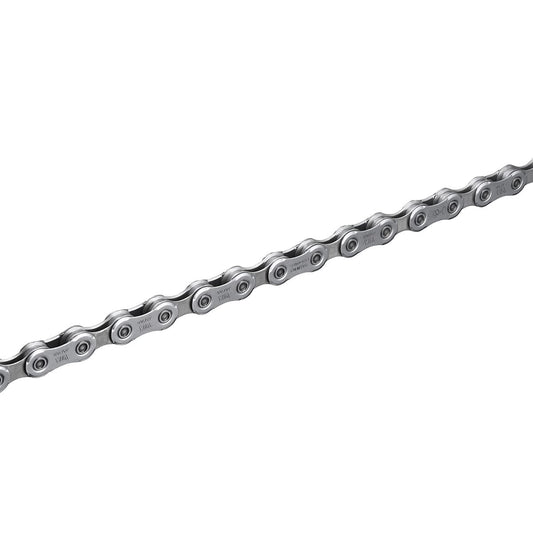
12 Speed SHIMANO SLX 105 CN-M7100 Quick Link E-Bike Rated chain
Regular price From 19,99 €Regular priceUnit price per -
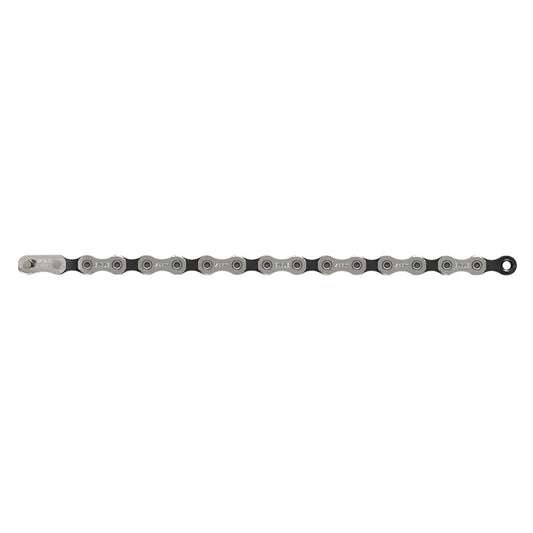
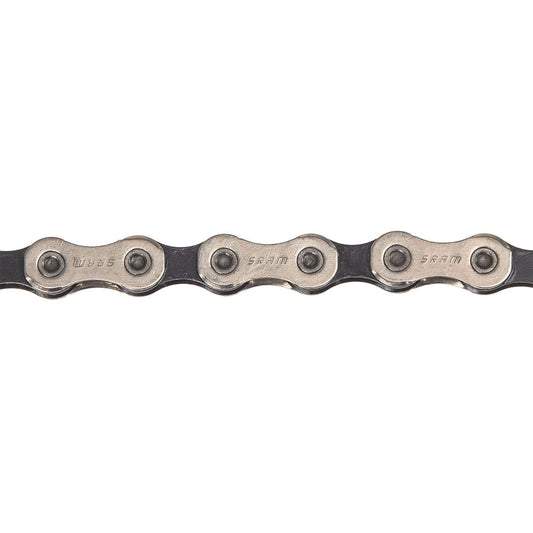
Chain 12 Speed SRAM GX EAGLE
Regular price From 22,99 €Regular priceUnit price per -
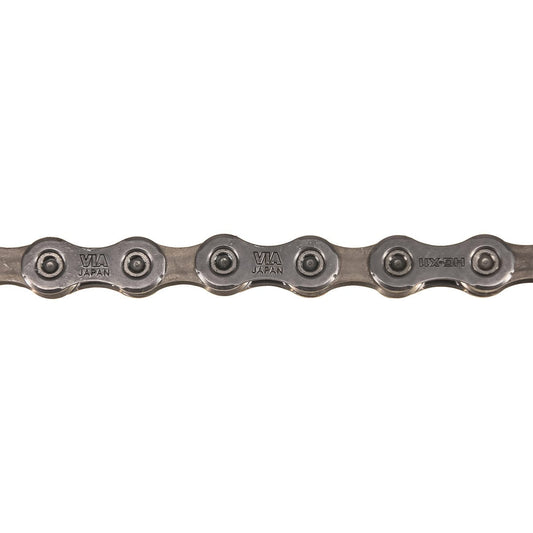
11V SHIMANO SLX 105 CN-HG601-11 E-Bike Rated chain
Regular price From 18,99 €Regular priceUnit price per -
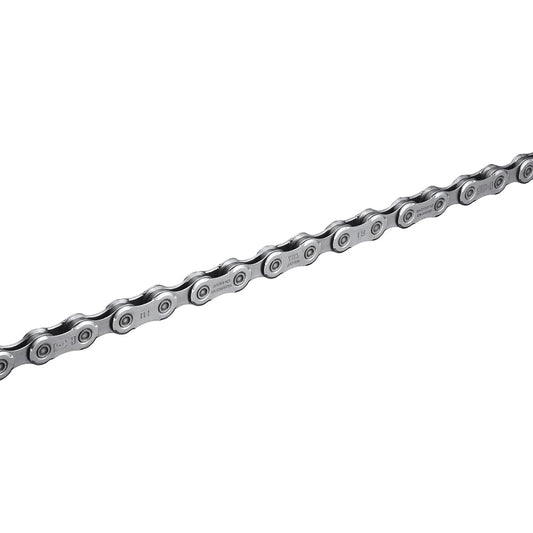
12V SHIMANO DEORE CN-M6100 Quick Link E-Bike Rated chain
Regular price From 14,99 €Regular priceUnit price per -
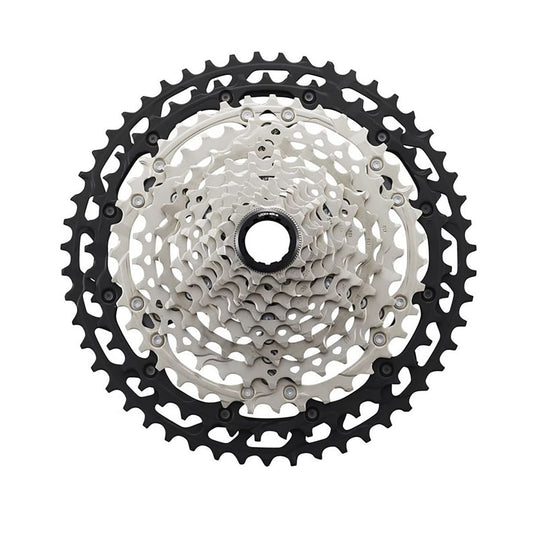

SHIMANO DEORE XT CS-M8100 12 Speed Cassette
Regular price From 89,99 €Regular priceUnit price per -
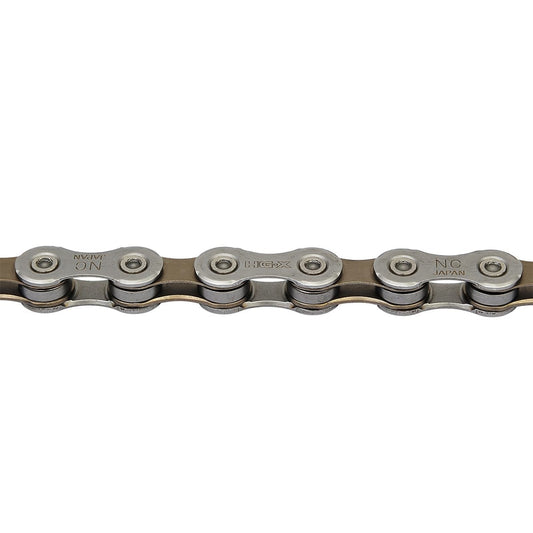
10 Speed SHIMANO DEORE CN-HG54 chain
Regular price 14,99 €Regular priceUnit price per
